A Photographic Exhibition
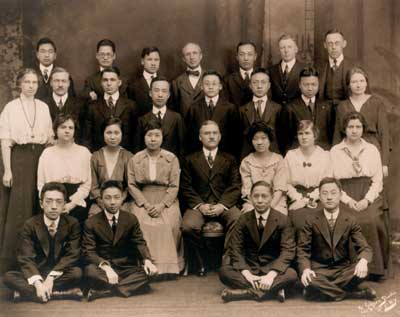
Chinese Student Club at Teachers College in 1916
The Chinese Student Club at Teachers College in 1916. In the middle is Professor Paul Monroe. Among the others are Jiang Menglin, second from left, back row; Hu Shi, first from left, front row; Sun Ke, second from right, front row; Tao Xingzhi, fourth from right, third row; and Lin Bing, third from right, third row. Upon their return to China, these members became the initiators of the May Fourth New Culture and New Education Movements that changed the outlook of China in the educational field. [Paul Monroe Papers, Special Collections, Teachers College Library]
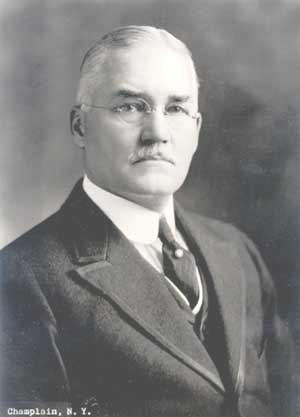
Professor Paul Monroe (1869-1947)
Professor Paul Monroe (1869-1947), Director of the International Institute of Teachers College. Monroe first visited China in 1913. He lectured in China in 1921 and returned many times to assist in the educational development of China. [Photograph by Champlain, ca. 1920; Paul Monroe Papers, Special Collections, Teachers College Library]

Professor William Heard Kilpatrick (1871-1965) with the members of the Chinese Students Association
Professor William Heard Kilpatrick (1871-1965), with the members of the Chinese Students Association at Teachers College, January 1929. They are joining in the unveiling of an honorary banner that had been given to Kilpatrick by the National Society for the Advancement of Education when he visited China in 1927. (The Chinese inscription on the banner means "Endless Ideas in Educational Practice") [TCana Photograph Collection, Special Collections, Teachers College Library]
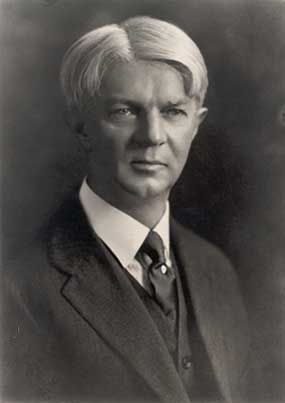
Professor William H. Kilpatrick (1871-1965)
Professor William H. Kilpatrick (1871-1965). Through his writings, notably The Project Method (1918), and his teaching, Kilpatrick made progressive educational ideas accessible to thousands of students at Teachers College. He visited his former students, including Tao Xinzhi, in China in 1927 and 1929. [Photograph ca. 1925; Faculty Photograph Collection, Special Collections, Teachers College Library]
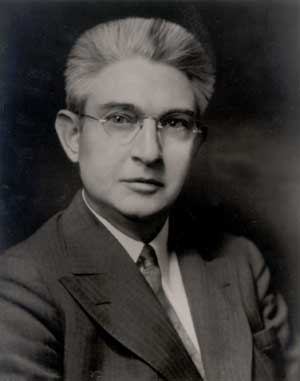
Professor Will McCall (1891-1982)
Professor Will McCall (1891-1982). In 1921, McCall was invited to China by the National Society for the Advancement of Education to carry out scientific measurement and related studies in Chinese education. His studies and report "Scientific Management and Related Studies in Chinese Education" helped to give the Society's program a solid base in modern educational research. [Photograph by Blackstone Studios, ca. 1930; Faculty Photograph Collection, Special Collections, Teachers College Library]
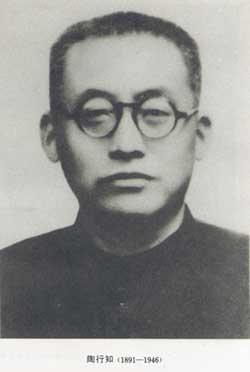
Tao Xingzhi (1891-1946)
Tao Xingzhi (1891-1946). After studying at Teachers College during 1916-1917, Tao returned home to become an influential exponent of modern education in China, and one of the most renowned educators in Chinese history. He developed an original synthesis of Deweyan and Chinese approaches to progressive education based on a first hand study and analysis of Chinese life and society. [Photograph ca. 1930, from the Collected Works of Tao Zingzhi, v.1, (Chengdu, 1991); Special Collections, Teachers College Library]
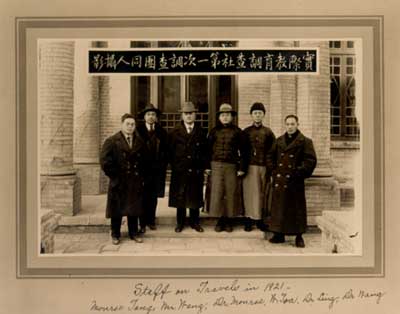
Tao Xingzhi accompanied Paul Monroe
Tao Xingzhi accompanied Paul Monroe in a series of educational surveys in Beijing, Tianjin and Shanghai in 1921. He was surprised to learn that the rate of urban illiteracy in China exceeded 70 percent. This helped him decide to devote a major portion of his efforts to the mass literacy movement. [Paul Monroe Papers, Special Collections, Teachers College Library]
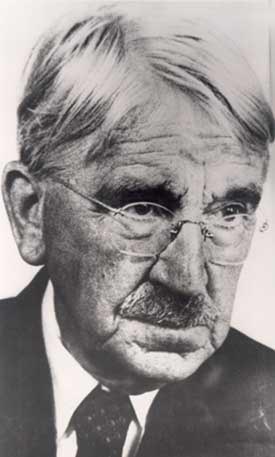
Professor John Dewey (1859-1952)
Professor John Dewey (1859-1952), renowned Columbia University philosopher and theorist of progressive education. At the invitation of Chinese alumni of Teachers College, Dewey spent the years 1919-1921 lecturing throughout China. [Photograph ca.1950; Faculty Photograph Collection; Special Collections, Teachers College Library]

Hu Shi (1891-1962)
Hu Shi (1891-1962). In 1910 Hu won a Boxer Indemnity scholarship to enroll at Cornell, and later studied with John Dewey in the Department of Philosophy at Columbia University. Upon his return to China in 1917, Hu Shi became a leader in the New Culture movement. He was the primary organizer of Dewey's lecture series in China during 1919-1921, and served as professor of philosophy at Peking University in the 1920s. From 1938 to 1942 he served as ambassador to the US. He became president of Peking University in 1946. [Photo ca. 1950.Paul Monroe Papers, Special Collections, Teachers College Library]
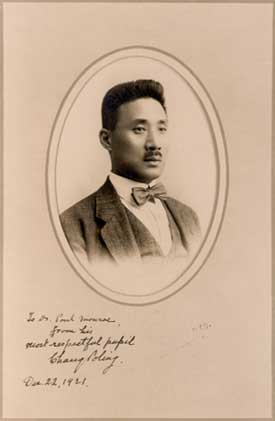
Chang Poling (1876-1951)
Chang Poling (1876-1951). After studying at Teachers College in 1917-18, Chang returned to Tianjin, where he founded Nan Kai University, serving as president from 1919-1948. [Photo by Tin Chang, Tientsin, ca. 1920; Paul Monroe Papers, Special Collections, Teachers College Library]
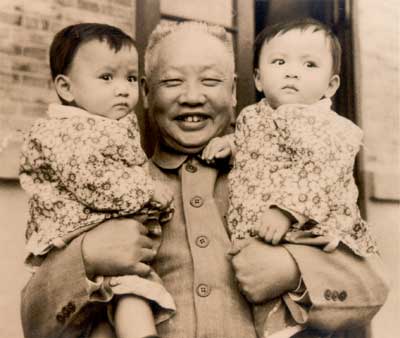
Chen Heqin (1892-1982)
Chen Heqin (1892-1982). After studying at Teachers College during 1917 and 1918, Chen returned to China to become the first modern Chinese theoretician of early childhood education. His work included promoting early childhood education opportunities, and developing teacher training programs that emphasized child psychology, family education, and education for handicapped children. [Photo ca. 1960, from Chen Heqin: An Educator Who Dedicated His Life to His Country, Zhe Jiang Educational Publishing House, 1992; Special Collections, Teachers College Library]
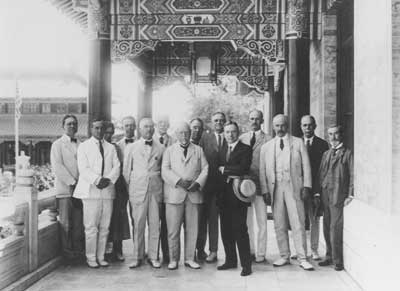
Trustees of the Peking Union Medical College in 1921
Trustees of the Peking Union Medical College in 1921. John D. Rockefeller, Jr., the major donor to the College, is in the center (holding his hat); Paul Monroe, President of the Board, is fifth from the left. [Paul Monroe Papers, Special Collections, Teachers College Library]
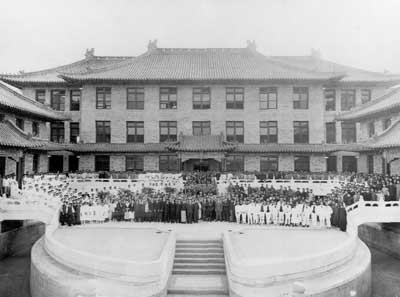
Peking Union Medical College
Peking Union Medical College, at the dedication ceremony in 1921. Peking Union Medical College (PUMC) is currently widely considered to be the most prestigious medical school in China. Its unique eight-year-long M.D. program has provided generations of leaders for academic modern medicine in China. [Paul Monroe Papers, Special Collections, Teachers College Library]
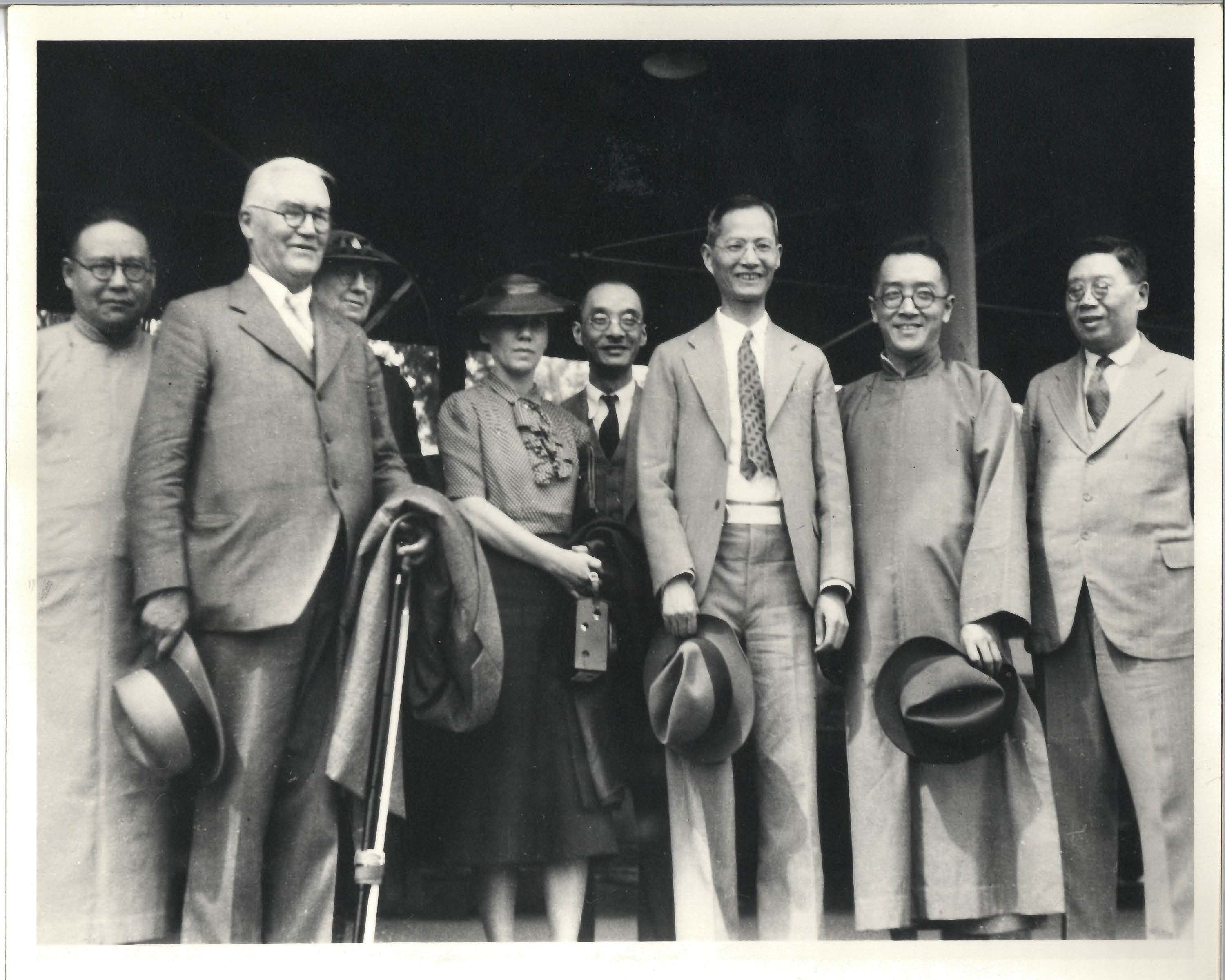
Paul Monroe, with his wife Emma Monroe and daughter Jeannette
Paul Monroe, with his wife Emma Monroe and daughter Jeannette, arriving in Beijing, May 1937, to preside at an international education conference. Welcoming him at the railway station were, among others, Jiang Menglin, President of Beijing university, former student of Monroe, and Hu Shi, former student of John Dewey. [Paul Monroe Papers, Special Collections, Teachers College Library]
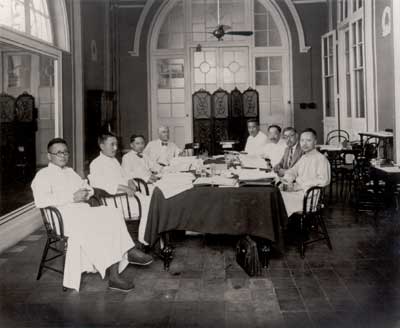
Board of Trustees of the China Foundation for the Promotion of Education and Culture
Board of Trustees of the China Foundation for the Promotion of Education and Culture. The foundation board consisted of ten Chinese members and five American members, and was charged with the distribution of the proceeds of the Second Remission of the Boxer Indemnity. Those attending this 1924 board meeting in Beijing included W. T. Tsur, former president of Tsing Hua University; V. K. Wellington Koo, Minister of Foreign Affairs; Prof. Paul Monroe, Vice-Chairman of the Board; Chang Poling, President of Nan Kai University, in Tientsin; W. W. Yen, Premier of China and Chairman of the Board; and Fan Yuan Lian, President of the National Normal University, Peking. [Paul Monroe Papers, Special Collections, Teachers College Library]